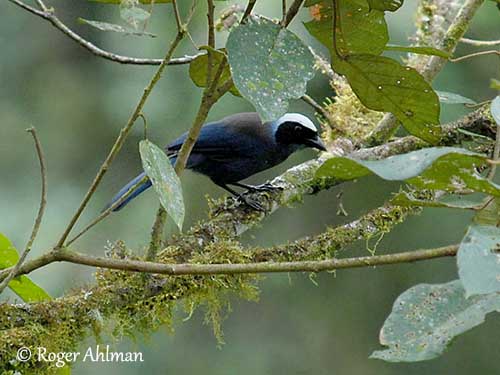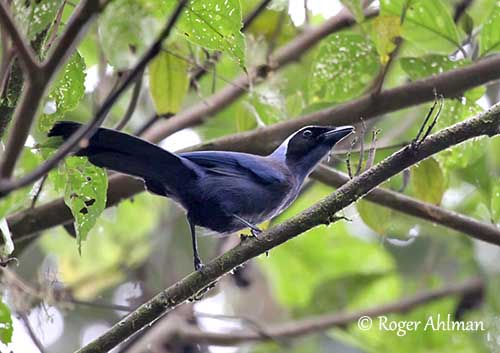
Fr: Geai superbe
Ang: Beautiful Jay
All: Schmuckhäher
Esp: Chara Hermosa, Chara Preciosa, Urraca del Chocó, Urraquita hermosa
Ita: Ghiandaia capobianco
Nd: Ornaatgaai
Sd: Praktskrika
Photographer:
Roger Ahlman
Pbase Galleries Peru and Ecuador
Text by Nicole Bouglouan
Sources:
HANDBOOK OF THE BIRDS OF THE WORLD Vol 14 by Josep del Hoyo-Andrew Elliot-David Christie - Lynx Edicions – ISBN: 9788496553507
A GUIDE TO THE BIRDS OF COLOMBIA by Steven L. Hilty and William L. Brown - Princeton University Press – ISBN 069108372X
BIRDS OF SOUTH AMERICA – Passerines - by Robert S. Ridgely and Guy Tudor – HELM Field Guides – ISBN: 9781408113424
BirdLife International (BirdLife International)
ORNITOLOGIA NEOTROPICAL 21: 611–614, 2010 - © The Neotropical Ornithological Society
PARENTAL CARE AND NESTLING DEVELOPMENT OF THE BEAUTIFUL JAY (CYANOLYCA PULCHRA) IN NORTH WESTERN ECUADOR
By David A. Laufenberg & Catherine Woodward
Neotropical Birds – Cornell Lab of Ornithology
Arthur Grosset's Birds (Arthur Grosset)
Beautiful Jay
Cyanolyca pulchra
Passeriformes Order – Corvidae Family
INTRODUCTION :
The Beautiful Jay is a secretive bird of the wet montane forest, a scarce and infrequently encountered species. It remains inside the forest and more often on the ground than other Cyanolyca jays.
It is affected by human disturbance and degradation of the habitat by deforestation.
DESCRIPTION OF THE BIRD:
Biometrics:
Length: 27 cm
The adult has short, dense and tufted feathers on the forecrown. Forehead, lores and head sides are black. The crown is milky blue, deepening to violet-blue on mantle, wings and tail. Mantle and breast are variably suffused with dusky brown. The chin is black but the throat is pale blue, washed with brown towards the upper breast. The belly is cyan blue. Wings and tail are blackish on the underside.
The robust bill is black. The eyes are dark brown. Legs and feet are black.

The female resembles male but she has brownish wash on the upperparts.
The juvenile is browner and duller than adults. The first year still shows brown tinge on mantle and upperwing-coverts.
RANGE:
The Beautiful Jay is found on the west slope of the Andes, from NW Colombia (S Chocó) to NW Ecuador (Pichincha).
HABITAT:
The Beautiful Jay frequents the wet mossy forest (cloud forest) and mature humid subtropical forest. It can be seen between 900 and 2200 metres of elevation. This species is less frequently seen in clearings, forest edge and second growth. However, it frequents marshy areas and dense vegetation along watercourses.
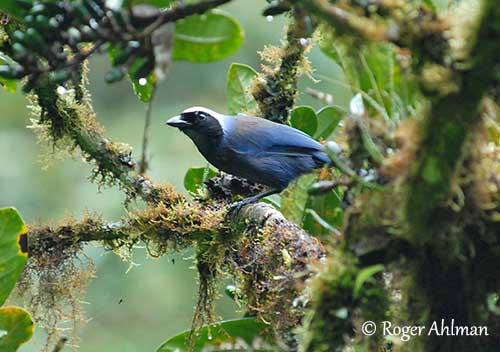
CALLS AND SONGS: SOUNDS BY XENO-CANTO
The Beautiful Jay gives guttural clicking notes such as repeated “chee” or more emphatic “chewp”. We can also hear a quickly repeated “chew-chew-chew” which can be uttered continually when the bird is excited.
Like many jays, it may bounce up and down while calling.
BEHAVIOUR IN THE WILD:
The Beautiful Jay is probably omnivorous like numerous Corvidae species, but it feeds primarily on arthropods.
It forages alone or in pairs by hopping and peering, usually in the understorey and at lower levels, mostly close to the ground, than other Cyanolyca jays.
The breeding behaviour is unknown, but we can suggest that the blue plumage and the black mask are enhanced by appropriate displays and postures. The feathers of head and neck are often fluffed up during the displays.
They are monogamous, but co-operative breeding seems to be frequent in these jays. However, during an observation of this species, helpers were not seen.
The Beautiful Jay is sedentary. It flies short distances between the different levels inside the forest.
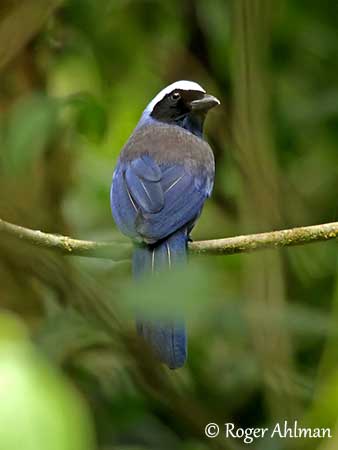
REPRODUCTION OF THIS SPECIES:
An observation of one nest from 12 to 27 April 2009 gives us some interesting information.
The nest-site was within secondary montane forest habitat. The nest was cup-shaped and placed about 2,5 metres high, in a Clusia crenata tree (family Clusiaceae) at forest edge.
The female laid two pale green eggs with sparse dark blotches. The hatching occurred on April 12, and fledging occurred 15 days later, on April 27. The incubation was probably of similar duration.
The chicks were fed by both parents, mainly on insects such as Orthoptera, including crickets, grasshoppers and katydids, Odonata such as dragonflies and damselflies, and Lepidoptera including moths and butterflies.
The adult activity was affected by bad weather, with reduced activity on rainy days.
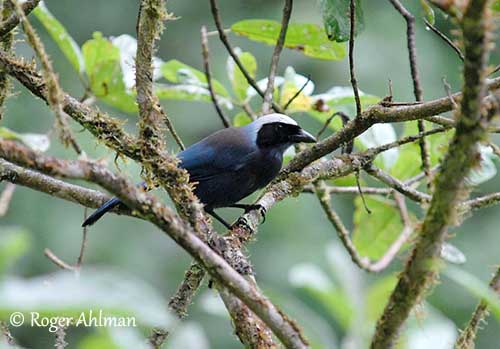
PROTECTION / THREATS / STATUS:
The Beautiful Jay is rare and local, an uncommon species of the wet montane forest, often hidden in the dense understorey within the forest.
It is threatened by human disturbance and habitat loss, due to heavy deforestation, completion of roads and colonisation. Unfortunately, the clearance and degradation of the Chocó forest of which this species is endemic is accelerating.
The population size has not been quantified, but it is suspected to be declining.
The Beautiful Jay is currently considered Near Threatened.
